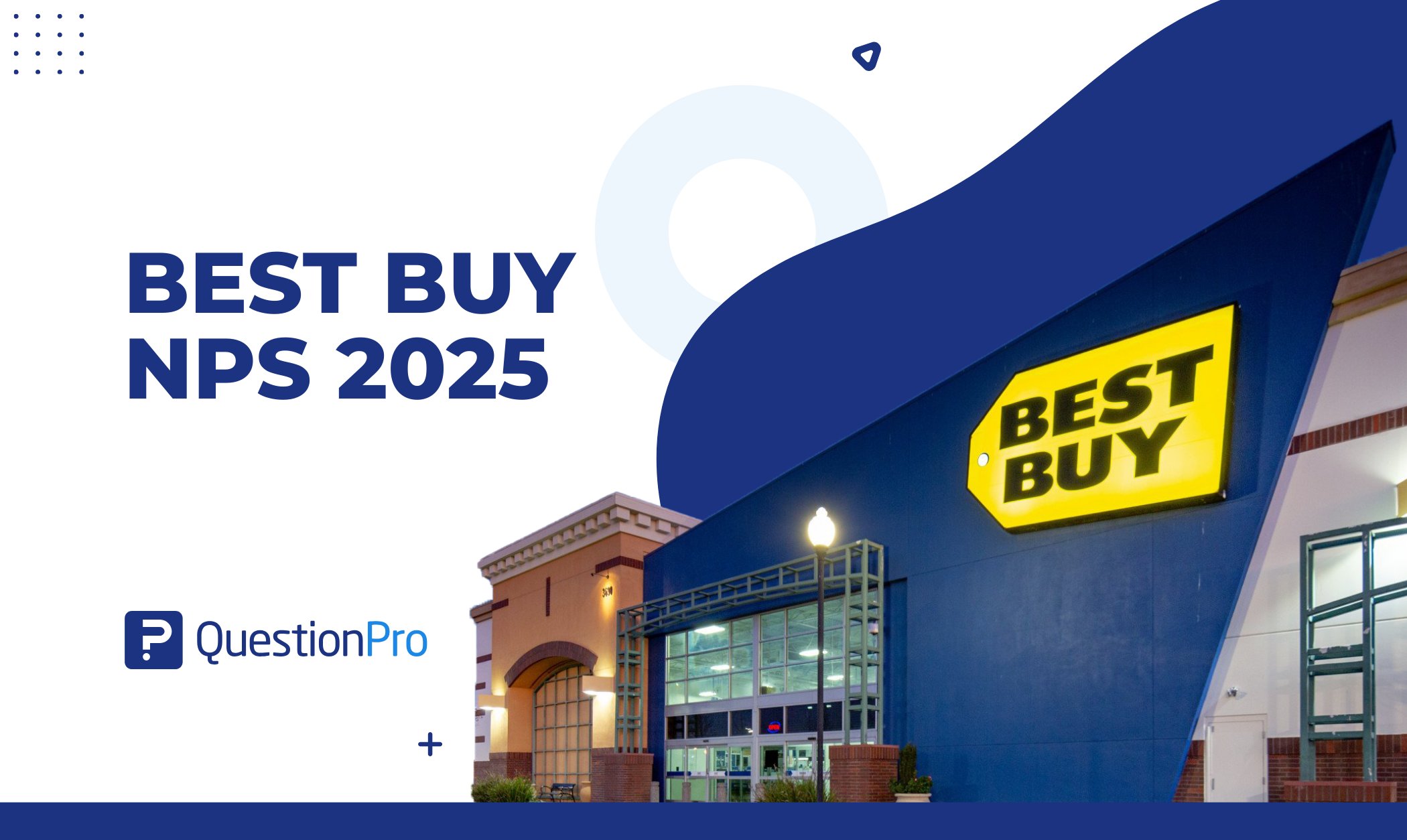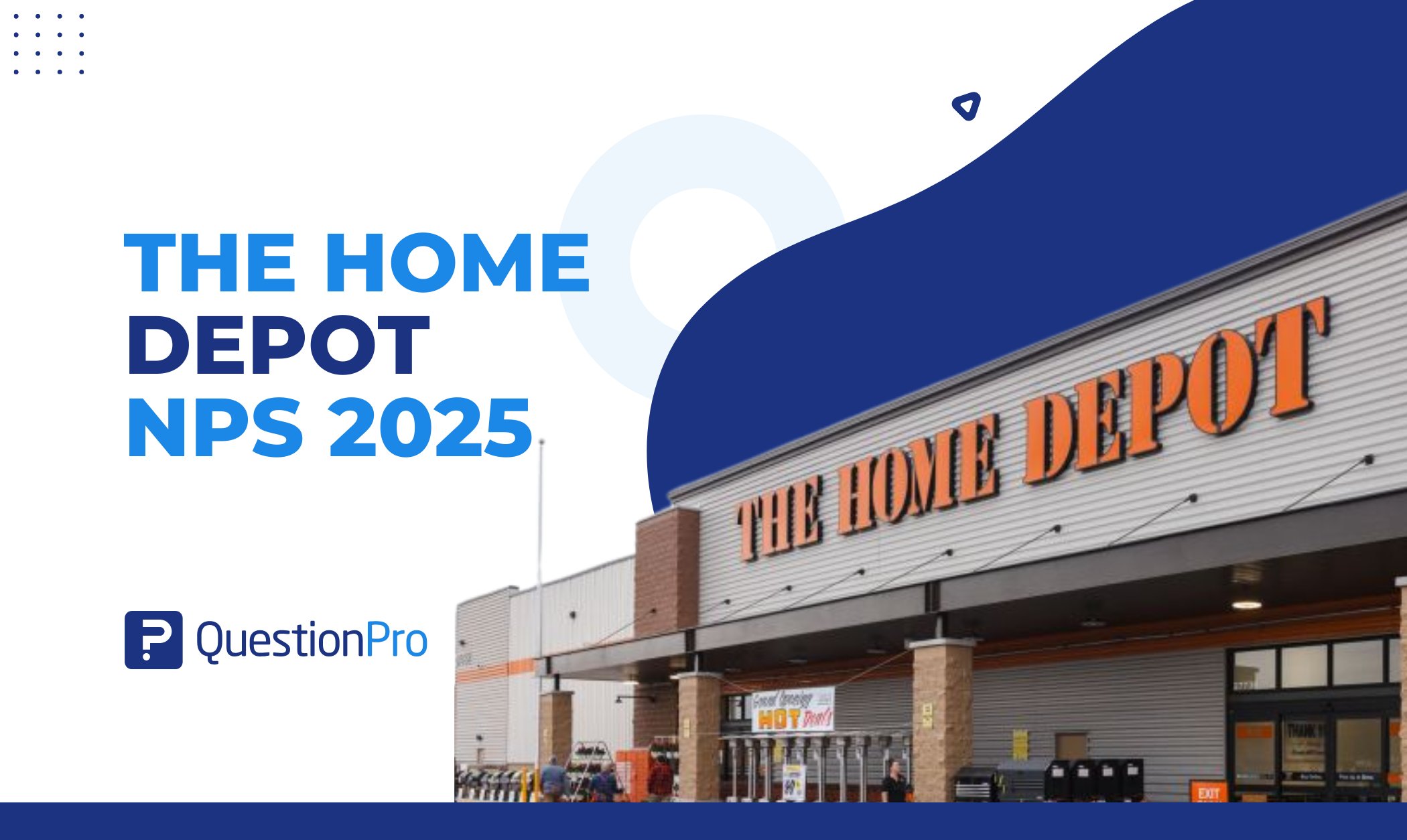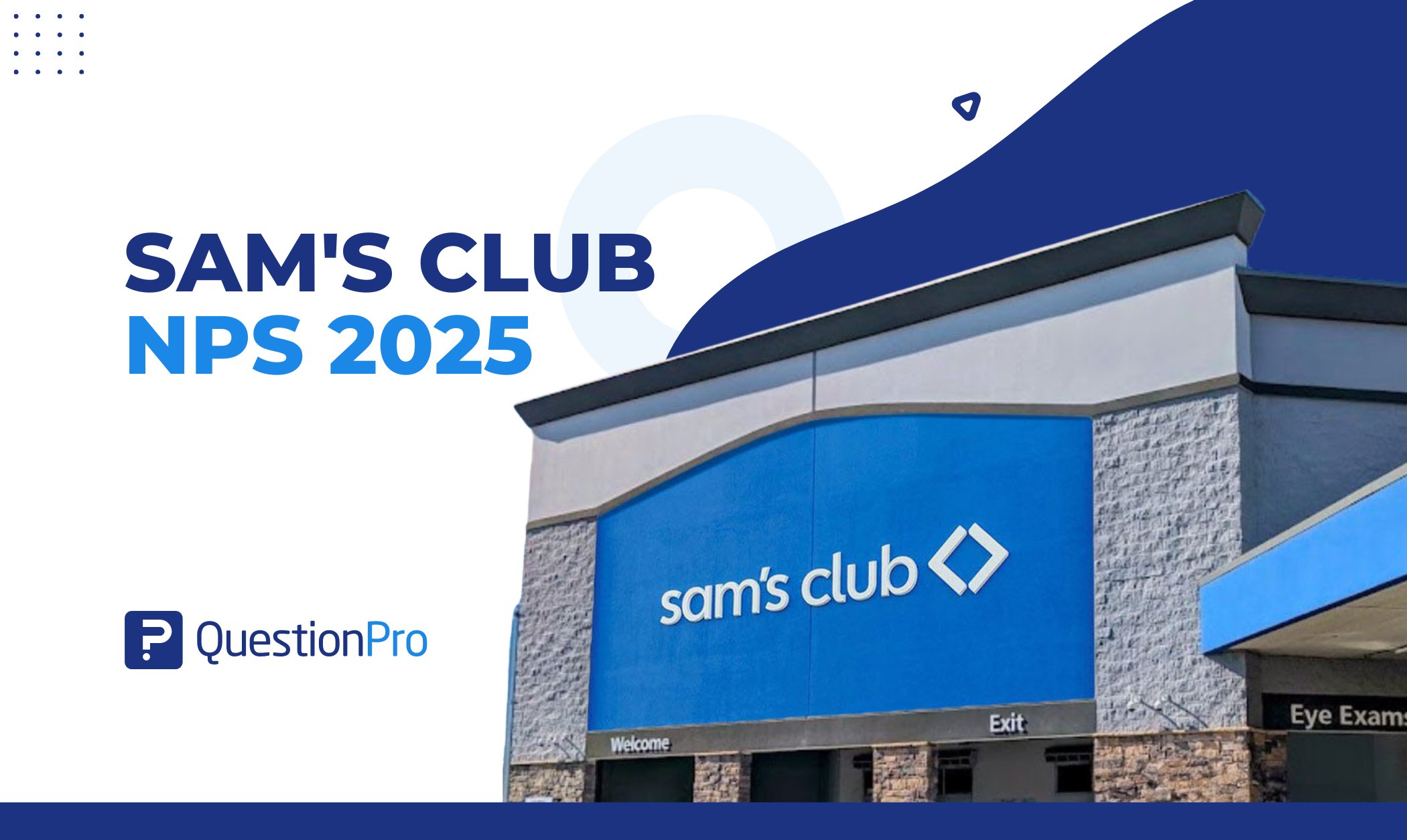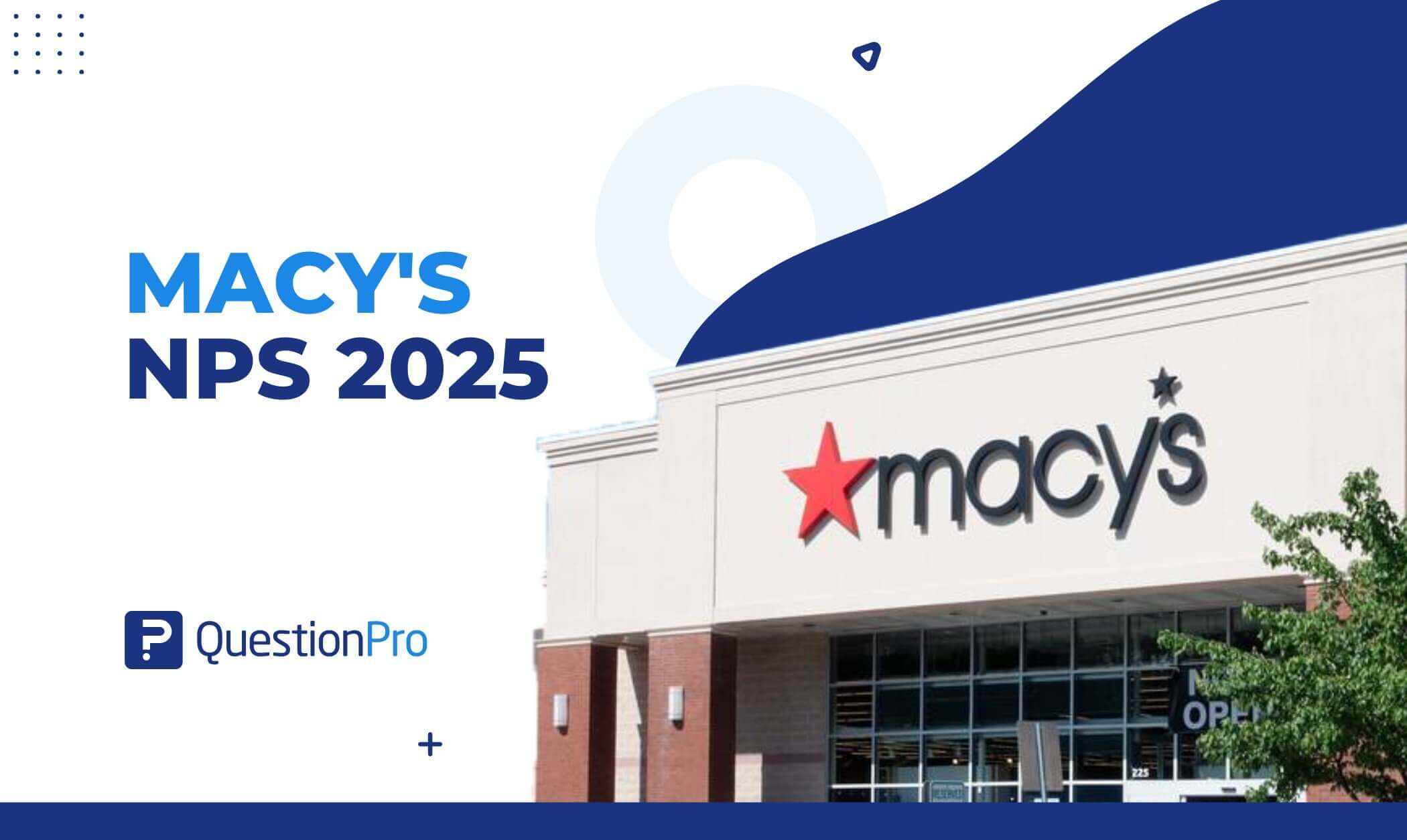
How well do you really know your customers? Understanding customer loyalty is more important than ever, and one of the most effective ways to measure it is through your Net Promoter Score (NPS). But how many brands truly leverage this metric to its fullest potential? Even large retailers like Macy’s have room for growth in this area.
In this blog, we’ll explore Macy’s NPS, uncover areas where they can improve to get a higher NPS score, and show you how to start tracking and boosting your own NPS.
What is the Net Promoter Score?
Net Promoter Score, or NPS, is a simple way for businesses to find out how happy their customers are—and how likely they are to recommend the company to others.
NPS begins by asking one simple question that reveals customer loyalty.
“On a scale of 0 to 10, how likely are you to recommend us to a friend or colleague?”
Based on the answer, customers are grouped into three types:
- Promoters (9–10)
These are your biggest fans. They love what you do and are likely to spread the word.
- Passives (7–8)
They’re satisfied, but not excited. They won’t badmouth you, but they probably won’t recommend you either.
- Detractors (0–6)
These customers are unhappy. They might complain or tell others about a bad experience.
To calculate your Net Promoter Score, use this formula:
NPS = % of Promoters − % of Detractors
NPS helps businesses understand customer satisfaction and loyalty. It shows how likely your customers are to recommend your product or service to others. A high score usually means your customers are happy and loyal, while a lower score can point to areas that need attention.
NPS also helps you keep track of how customer sentiment changes over time. This can guide your team in making smarter, data-based decisions and choosing what to improve first.
Another benefit? You can compare your score with others in your industry. This is called NPS benchmarking, and it helps you see how well you’re doing in the bigger picture.
Since NPS expectations differ from one industry to another, this kind of benchmarking helps you figure out if your score is solid or if there’s room to step things up.
Macy’s NPS NPS Performance Score
Macy’s is close to the industry benchmark in terms of customer loyalty. According to QuestionPro’s Q1 2025 Benchmarking NPS and CSAT Report, the average NPS for the retail industry is 37. Macy’s scores 35, suggesting that while customers are generally satisfied, there’s an opportunity to strengthen loyalty further and improve the customer experience.
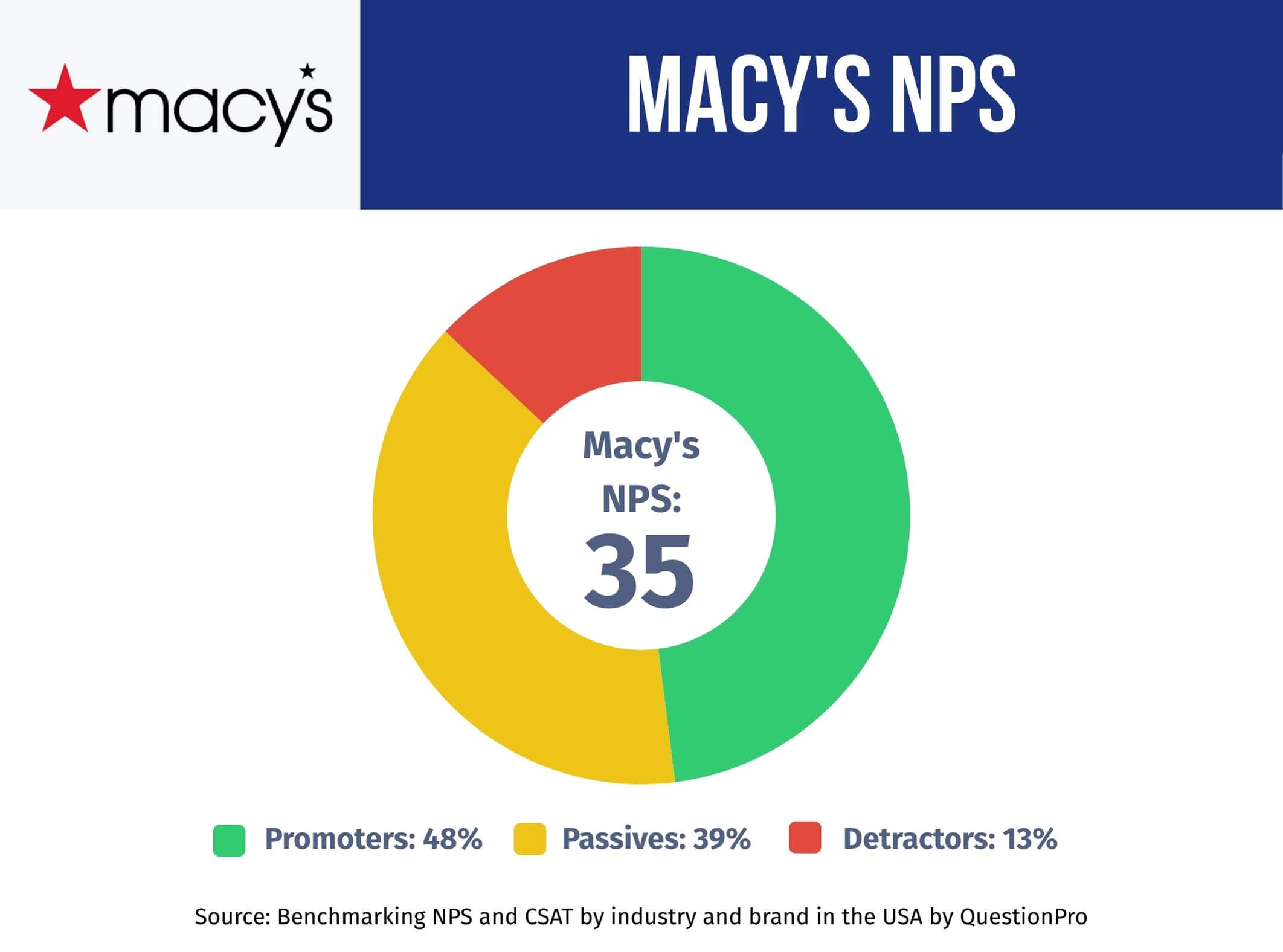
- Promoters: 48%
- Passives: 39%
- Detractors: 13%
With 48% of respondents falling into the Promoter category, Macy’s shows a good level of customer loyalty, although there’s still room to grow.
Passives make up a significant portion at 39%, indicating that many customers are satisfied but not ready to speak about the brand. Meanwhile, 13% of Detractors suggest that a small portion of customers have had less-than-ideal experiences.
Overall, Macy’s is maintaining a positive reputation, but the data shows potential to strengthen customer relationships even further. By turning more Passives into Promoters and reducing the Detractor group, Macy’s can boost its NPS and deepen customer trust and advocacy.
How Does Macy’s Compare to Industry Benchmarks?
Macy’s is slightly below the retail industry average in terms of customer satisfaction and loyalty. According to QuestionPro’s Q1 2025 Benchmarking NPS and CSAT Report, the average NPS for the retail industry is 37, while Macy’s scores a bit lower at 35.
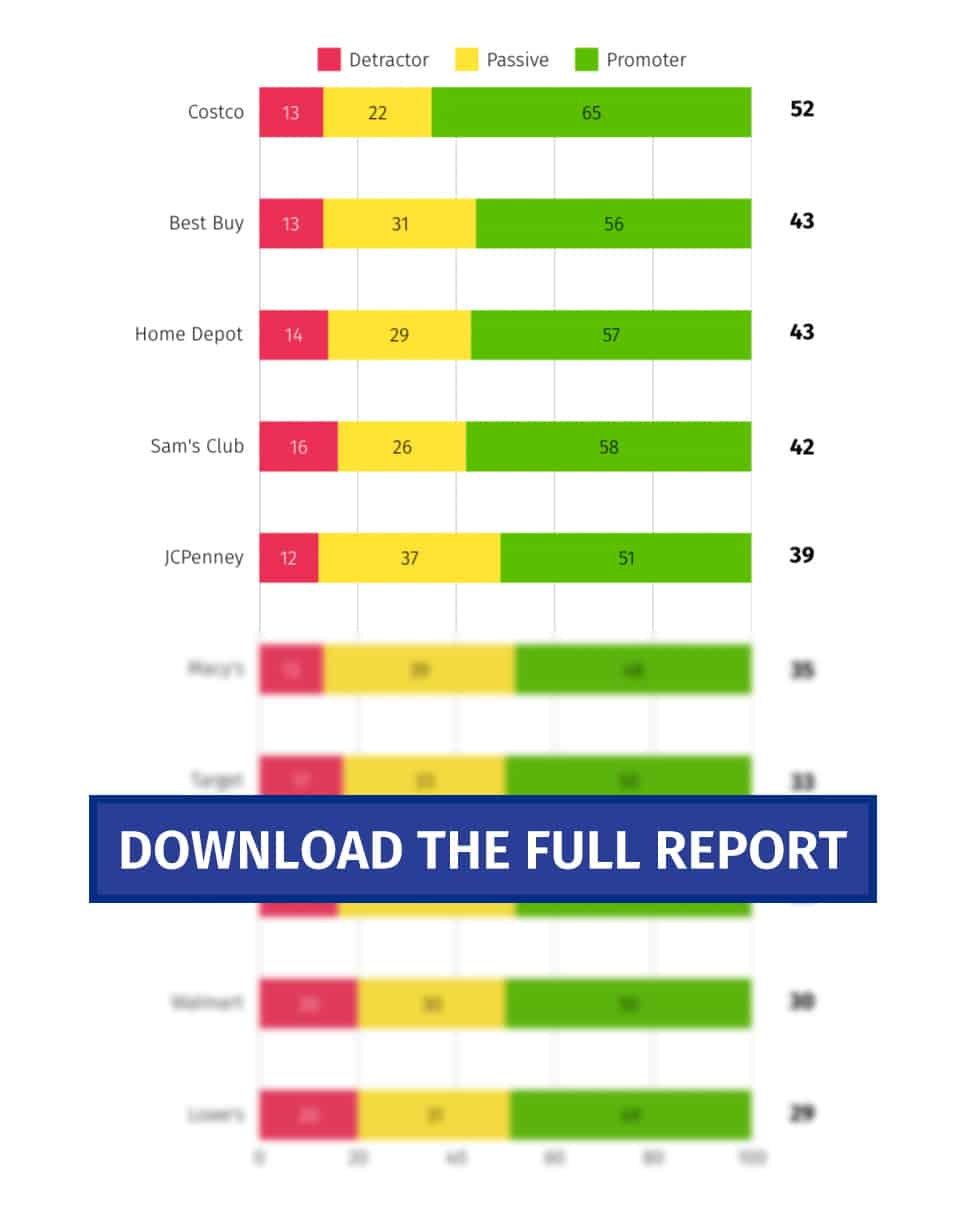
The difference in NPS might be small, but it highlights a chance for Macy’s to build a stronger connection with its customers. While many shoppers are satisfied, fewer are leaving with an experience they’re excited to recommend to others.
In a retail world filled with tough competition and high customer expectations, Macy’s slightly below-average NPS suggests there’s a chance of improvement. It’s a signal that with more focus on enhancing service, expanding product offerings, and improving the overall experience, the brand can boost customer loyalty.
These findings come from QuestionPro’s Q1 2025 Benchmarking NPS and CSAT Report, which gathered insights from 1,000 participants to evaluate how different brands are performing. The report is updated every quarter, reflecting current customer feedback across industries.
Why You Need to Know Macy’s NPS?
Macy’s NPS offers valuable insight into customer loyalty and highlights opportunities for growth. A Promoter score of 48 reflects areas where the brand is doing well, especially in customer support. However, a Passiver score of 39 signals key issues affecting overall satisfaction. To turn passives and detractors into loyal promoters, Macy’s should consider the following improvements:
- Offer employees Customer Support training: Macy’s must prioritize respectful, empathetic, and well-trained customer support. Negative experiences with rude or unhelpful staff, especially during high-stress situations like returns or complaints, deeply impact loyalty.
- Improve Delivery and Return Processes: Clear communication, on-time deliveries, and streamlined return processes are essential. Customers expect efficiency, not confusion or delays, especially when dealing with expensive or defective items.
- Fix Digital and Tech Issues: Macy’s app and website need significant upgrades to prevent crashes and errors during checkout. A smoother digital experience is vital for retaining modern shoppers.
- Be Transparent and Fair with Promotions and Credit Policies: Misleading promotions and high APRs frustrate loyal customers. Macy’s should offer better rewards and maintain transparency around credit decisions and advertised discounts.
- Invest in In-Store Staffing and Cleanliness: A better in-store experience starts with attentive, well-staffed floors and clean, welcoming environments. Shoppers shouldn’t feel like they’re wandering through a forgotten store.
By understanding and acting on Macy’s NPS, you can build stronger relationships, increase customer lifetime value, and ultimately create more meaningful brand experiences.
So, if you care about customer success, brand loyalty, or just staying ahead in retail, Macy’s NPS is something you definitely need to know.
How to Measure and Improve Your NPS?
Want to know how to measure and boost your company’s NPS? With QuestionPro, it’s easier than you think to track your score and take action to improve it.
1. Create Your NPS Survey
Use QuestionPro’s pre-built NPS survey template, or customize your own. Include the standard NPS question and follow-up questions to understand the “why” behind the score.
2. Choose Your Channels
Send your NPS survey through:
- SMS
- Website pop-ups
- Mobile apps
- QR codes
This helps you reach your audience where they are most active. You can use QuestionPro Audience to target people based on things like industry or demographics.
3. Collect Real-Time Responses
With QuestionPro’s live dashboard, you can watch responses come in instantly. Segment them by location, product, service, or channel to dig deeper.
4. Analyze Your Results
Use built-in analytics to:
- See your overall NPS score
- Identify trends over time
- Spot areas of improvement
- Understand what drives promoters and detractors
QuestionPro even provides text analysis to highlight common customer sentiments. This platform makes tracking and improving your NPS easy and continuous, helping you stay on top of customer satisfaction.
Keep Up with the Latest NPS Trends in 2025
Explore the Q1 2025 NPS Benchmark Report to see how top brands build customer loyalty.
Ready to improve your NPS? Reach out to the QuestionPro experts for custom tips on improving customer satisfaction.
Macy’s isn’t the only company in the big box retail industry with valuable lessons for those looking to improve their customer service and experience. Below, we recommend a few articles where you can learn how other major brands manage to maintain a high NPS and a loyal customer base — you’ll surely find some useful insights along the way.




